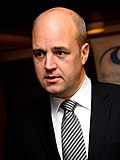
Back Eleccions legislatives sueques de 2010 Catalan Parlamentní volby ve Švédsku 2010 Czech Riksdagsvalget i Sverige 2010 Danish Wahl zum Schwedischen Reichstag 2010 German Elecciones generales de Suecia de 2010 Spanish Ruotsin valtiopäivävaalit 2010 Finnish Élections législatives suédoises de 2010 French Pemilihan umum Swedia 2010 ID Elezioni legislative in Svezia del 2010 Italian 2010년 스웨덴 총선거 Korean
| |||||||||||||||||||||||||||||||||||||||||||||||||||||||||||||||||||||||||||||||||||||||||||||||||||||||||||||||||||||||||||||||||||||||||||||
All 349 seats to the Riksdag 175 seats are needed for a majority | |||||||||||||||||||||||||||||||||||||||||||||||||||||||||||||||||||||||||||||||||||||||||||||||||||||||||||||||||||||||||||||||||||||||||||||
|---|---|---|---|---|---|---|---|---|---|---|---|---|---|---|---|---|---|---|---|---|---|---|---|---|---|---|---|---|---|---|---|---|---|---|---|---|---|---|---|---|---|---|---|---|---|---|---|---|---|---|---|---|---|---|---|---|---|---|---|---|---|---|---|---|---|---|---|---|---|---|---|---|---|---|---|---|---|---|---|---|---|---|---|---|---|---|---|---|---|---|---|---|---|---|---|---|---|---|---|---|---|---|---|---|---|---|---|---|---|---|---|---|---|---|---|---|---|---|---|---|---|---|---|---|---|---|---|---|---|---|---|---|---|---|---|---|---|---|---|---|---|
| |||||||||||||||||||||||||||||||||||||||||||||||||||||||||||||||||||||||||||||||||||||||||||||||||||||||||||||||||||||||||||||||||||||||||||||
Red-Social Democratic, Blue-Moderate | |||||||||||||||||||||||||||||||||||||||||||||||||||||||||||||||||||||||||||||||||||||||||||||||||||||||||||||||||||||||||||||||||||||||||||||
| |||||||||||||||||||||||||||||||||||||||||||||||||||||||||||||||||||||||||||||||||||||||||||||||||||||||||||||||||||||||||||||||||||||||||||||
General elections were held in Sweden on 19 September 2010 to elect the 349 members of the Riksdag. The main contenders of the election were the governing centre-right coalition the Alliance, consisting of the Moderate Party, the Centre Party, the Liberal People's Party and the Christian Democrats; and the opposition centre-left coalition the Red-Greens, consisting of the Social Democrats, the Left Party and the Green Party.
The Alliance received 49.27 percent of the votes (an increase by 1.03 pp from the previous election) and 173 seats in the parliament (a decrease by 5 seats and 2 short of an overall majority), while the Red-Greens received 43.60 percent of the vote (a decrease by 2.48 pp) and 156 seats (a decrease by 15 seats).[1] The election also saw the nationalist Sweden Democrats entering parliament for the first time, as the sixth largest and only non-aligned of the eight parties elected to the parliament, by receiving 5.70 percent of the votes (an increase by 2.77 pp) and 20 seats.[1] Both in terms of percentage share; 30.06%, and the actual vote; 1,791,766, the Moderate Party had its strongest election of the unicameral parliamentary era, narrowly missing out on beating the Social Democrats to become the largest party.[2] The Alliance dominated the Stockholm capital region of the municipality and county and made further gains in South Sweden including narrowly flipping Malmö blue as well as winning pluralities in traditionally red towns such as Kalmar, Landskrona and Trelleborg.[1]
The Alliance lost its absolute majority in the parliament but continued to govern as a minority government. The new parliament held its opening session on 5 October, with Prime Minister Fredrik Reinfeldt presenting the annual government policy statement, along with changes to his cabinet.[3]
This was the first time in almost a century that a Swedish centre-right government that had served a full term was reelected.[4]
- ^ a b c Cite error: The named reference
electionresultswas invoked but never defined (see the help page). - ^ "Röster - Val 2010". Valmyndigheten. 23 September 2010. Archived from the original on 4 September 2019. Retrieved 18 November 2019.
- ^ "Reinfeldt unveils reshuffled cabinet". The Local. 5 October 2010. Retrieved 5 October 2010.
- ^ "Sweden braces for rollercoaster election". The Local. 19 September 2010. Retrieved 19 September 2010.









